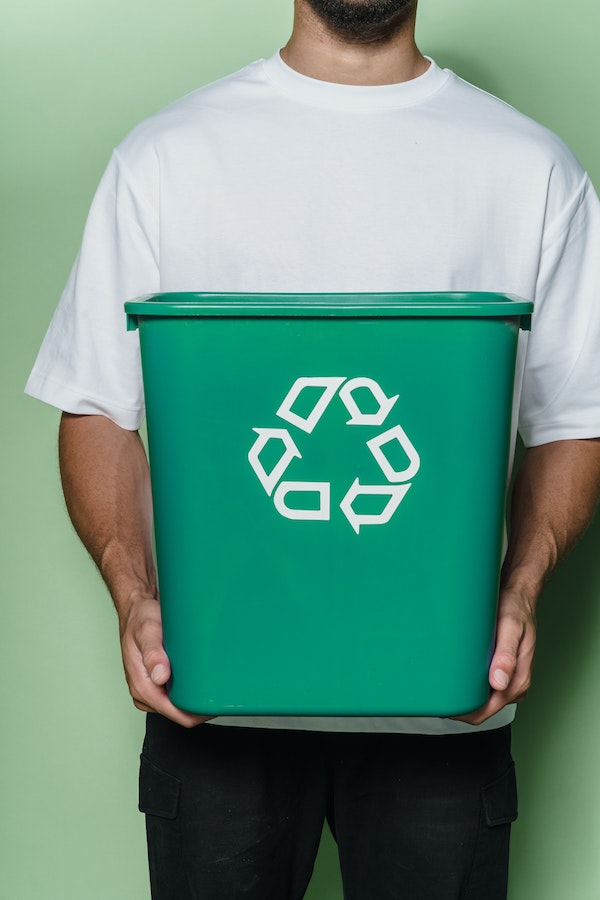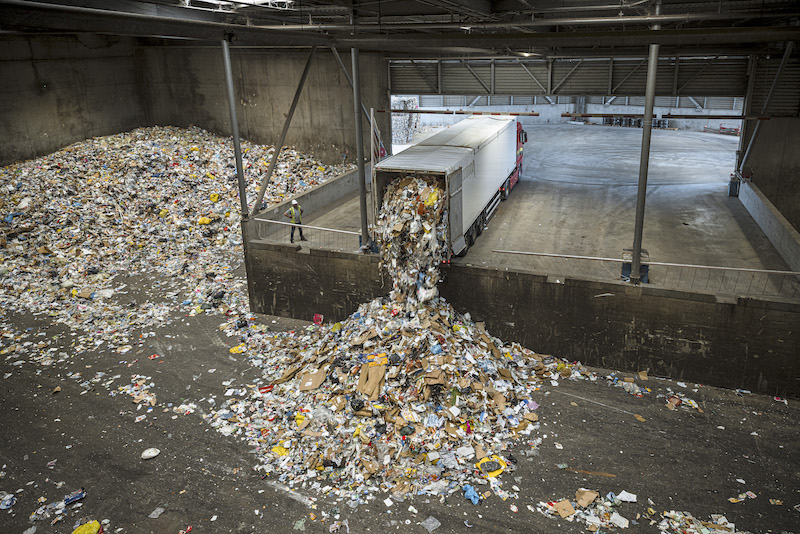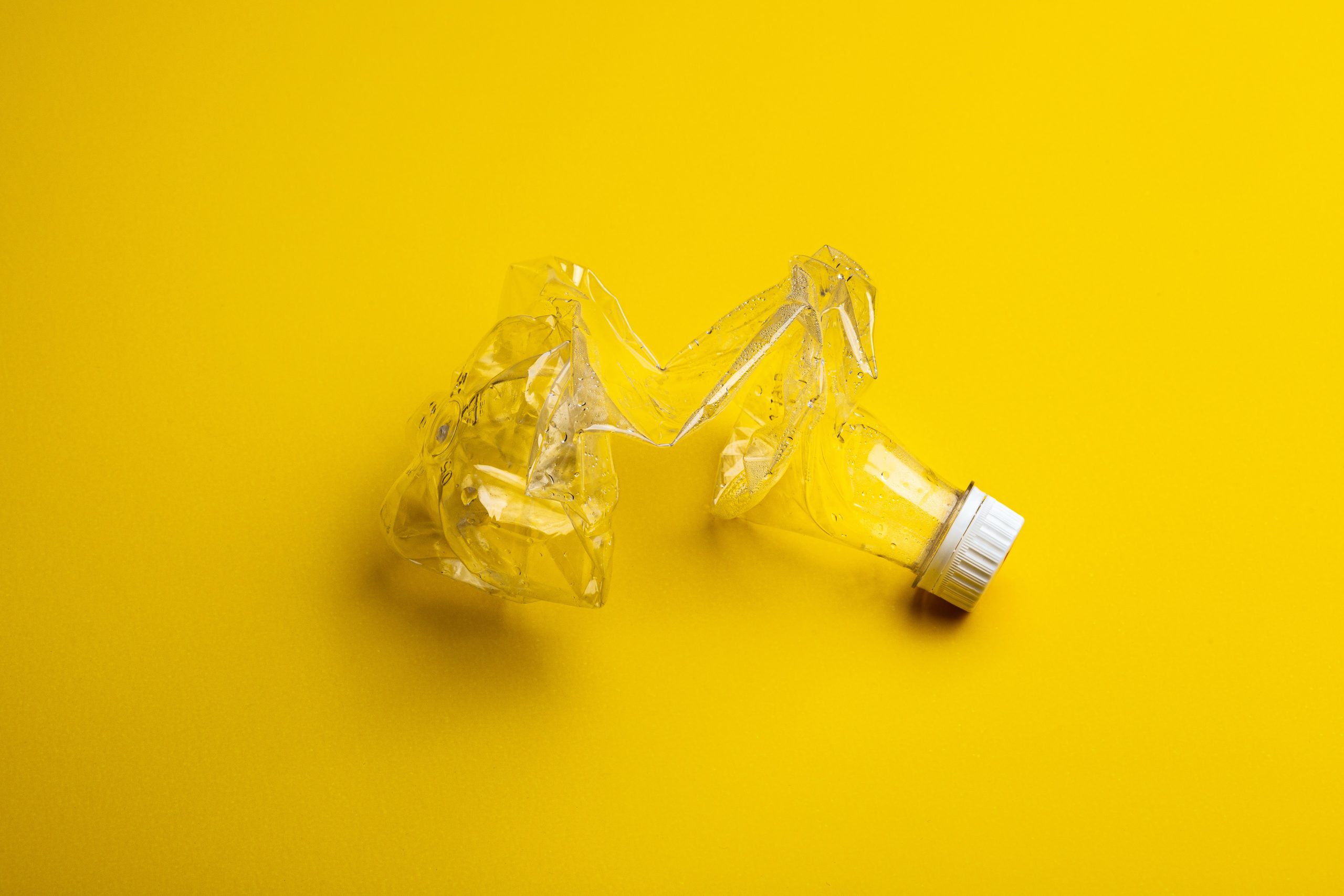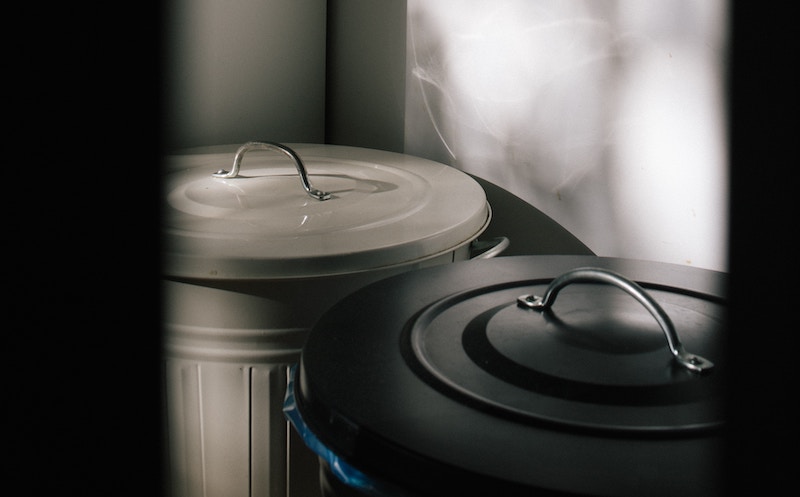
From Sorting to Waste Reduction: Accompanying the Change in Mentality
Certain African kingdoms in what is now Burkina Faso had a strange proverb: “One recognizes a great leader by his garbage.” Garbage never ceases to be socialized, and the vassals of the Mossi kings were indeed obliged to bring their own garbage to the entrance of the capital to create a growing heap of garbage demonstrating the extent of royal power. Therefore, throwing away as little waste as possible could be a sign of wealth, rewarded with new symbolic gratifications, or even a new business model. In an era where all modern societies are facing the same challenges and where learning now circulates from the Global South to the Global North, discarding as little waste as possible would entail a profound change in mentality that would break with what Georges Bataille called “the accursed share of modernity,” meaning humans’ dissipation of the energy not necessary for the functioning of life.
Grégory Quenet
In 1883, the famous decree by Eugène Poubelle already provided for selective waste sorting at the source: one container for organic waste, one for paper and rags, and one for glass, earthenware, or oyster shells. Little accustomed to the act of sorting, which was previously carried out by scavengers, particularly ragpickers, Parisians quickly abandoned this practice, which no one would reconsider for over a hundred years. In 1992, the Royal Law sought to once again encourage local authorities to implement selective sorting of packaging in order to promote the recycling of raw materials, but the integration of the spirit of the law into customs ultimately took about thirty years. It must be said that its implementation is particularly complex: sorting initially required distinguishing between different types of packaging, as not all of them are recyclable. Initially, sorting rules were limited to bottles, PET resin containers (used for example in mineral water bottles), and HDPE resin, used for laundry detergent bottles. While this sector has been successful, it “has not allowed for the development of recycling of other plastic packaging such as trays, pots, or films,” explains Citeo1, the eco-organization specializing in packaging.
The Emergence of New Professions and a New Sensitivity
Despite the difficulties, the law will soon lead to the emergence of new professions related to sorting and recycling. “The services responsible for household waste in Rennes Métropole were managed by three people in 1993!” exclaims Martial Gabillard, Director of Flow Recovery at Veolia in France, while today two hundred people work in this sector. Thousands of jobs have been created, including environmental engineering and technician specialists, to meet the new demand. In the early 1990s, the Compagnie Générale des Eaux, which also manages various companies in waste, transportation, and energy, struggled to find the right candidate profiles to fill the new job openings in these fields because “there were only two small study programs on collective heating professions, almost none on sanitation professions, and absolutely none on transportation and waste collection,” recalls Hilaire de Chergé2, former Director of HR Performance at Veolia. Veolia inaugurated a campus in Jouy-le-Moutier in 1994, which offers diploma programs. “It was truly original,” adds Jean-Marie Lambert, former Deputy General Manager of Veolia in charge of HR. “At the time, these programs did not exist, so we reached an agreement with the education authorities and universities to create diplomas in these professions, from vocational training to master’s degrees, with apprenticeships and alternating education.”
In the mid-2000s, Veolia campuses trained approximately six hundred apprentices each year and hosted fifteen thousand people for internships. “In line with the initial motivation, this considerable development of internal training improved the image of our professions and facilitated recruitment,” emphasizes Hilaire de Chergé. “Contrary to what many feared, it also contributed to staff retention.” With the professionalization of the sector, awareness and education have made waste sorting a relatively ordinary gesture today. It has even become emblematic of our ecological awareness, the minimum commitment of citizens to the environment. According to the Elabe Veolia 2023 barometer of ecological transformation, 84 percent of French people are willing to sort their waste more to fight pollution, a figure that is roughly the same as the global population. “The integration of users, solicited to participate in sorting for recycling, has continued by involving consumers, who are responsible for their consumption practices,” adds Laurence Rocher3, Associate Professor in Urban Planning and Development at Lyon 2 University. In other words, selective sorting alone is not enough to solve the waste problem; we also need to change our consumption habits.
In 2008, a European directive translated this emerging awareness into law by establishing a hierarchy of waste management methods: prevention, preparation for reuse, recycling, other forms of valorization, and finally disposal when no other option is available. In summary, the best waste is the waste that is never produced, and the concept of waste reduction, or even frugality, has entered into the discussion. The term “frugality” refers to a simpler way of life based on frugal consumption in all areas. In her article “Towards a Society of Frugality: Conditions for Changing Consumer Behavior,” written for the Veolia Institute's journal, Valérie Guillard writes: “The negative impact of our behavior on the environment implies going beyond the circular economy (reuse, recycling, and eco-design) toward more frugal lifestyles. Frugality is a way of life that does not only consist of consuming better but, above all, consuming less.”
For the doctor of management sciences, this represents a radical change in consumers’ way of life and their relationship with objects: “Frugal acquisition involves rethinking the type of objects to acquire, and the manner and places to do so. Buying frugally also means buying quality, durable products, questioning their materials. This involves not only thinking about the object but also feeling it, engaging not only representations and beliefs but also knowledge and sensory perception.” Therefore, there is a new quantum leap to make from sorting to waste reduction. If we have managed to reject the society of disposability, will we be able to do the same with the society of wastefulness? What have been the drivers of the adoption of selective sorting by French society? How can we push further by encouraging a different approach to waste? In countries around the world, we are starting to see this change in mentality, which is gradually altering our perspectives on waste production. Zero waste, bulk shopping, reuse, repair, rental, lending, bartering—the new consumption practices are numerous and adaptable, with a solution for every situation. How can we generalize these practices among the population while ensuring the continuity of a prosperous life? These are the challenges that our societies face today.

The Difficult Transition to Sorting: The French Example
The transition from convictions to actions is sometimes difficult. And it was particularly difficult in France. On August 27, 1998, the newspaper Le Monde headlined “Selective Waste Sorting Struggles to Become a Part of French Culture." The first time that the French began sorting was in 1977 with experiments in glass sorting, followed by old newspaper sorting in the late 1980s. More significant initiatives emerged in the early 1990s, but by 1998 only 6 percent of waste was being sorted in France.
The Limits of Prioritizing Local Action

Local authorities are at the forefront of waste management and the implementation of selective collections. However, only ten thousand out of France's thirty-six thousand municipalities have done so, which is less than one third. It must be said that the selective sorting system requires significantly more funding than landfilling, which has been prevalent in most rural areas, and municipalities often hesitate to assume this cost. Hence, there has been a sometimes excessive reliance on voluntary drop-off from users, a system that is not always effective.
The article in Le Monde also highlights the organizational complexity of sorting and how it weighs on the behaviors of users: “Selective waste sorting imposes a daily discipline. How can we encourage users to remove the caps from bottles, often made of a resin that differs from the container's resin”—especially when the rules can vary from one municipality to another?
As Franck Pilard, Sales Director at Veolia Recycling and Waste Recovery, explains, “In line with French decentralization, municipalities and intermunicipal authorities were given latitude to act. Each one could sovereignly decide on the best collection scheme. As a result, due to historical and contingent reasons, we have had various configurations, and indeed, when you moved or went on vacation, there was no continuity in sorting instructions, and even the colors of the bins were not harmonized.” Some municipalities provided special blue bins for paper recycling, while others did not separate paper from the yellow bin. These blue containers would then accept all types of paper...except for receipts, envelopes with windows, photo paper, wallpaper, or gift wrapping paper. For packaging, much of which is made from composite materials, there have long been numerous exceptions depending on where you live: egg cartons, yogurt pots, toothpaste tubes, plastic films, plastic bags, pizza boxes…all of it created confusion for consumers when it came to their bins. Not to mention a whole list of specific waste that consumers still have to take to dedicated collectors: medications, batteries, light bulbs, clothing, toys, electronic waste, etc.
Standardization, Transparency, Education, and Incentives: Keys to Success
“The clearer, simpler, and more stable the instructions, the more they can be understood and applied by everyone,” argues Matthieu Carrière, responsible for Sorting and Biological Treatment at Veolia Recycling and Waste Recovery. Since 2009, there has been a national project to simplify sorting by allowing residents to sort all their packaging in the same way throughout France. The Energy Transition for Green Growth Act of August 17, 2015, enshrined a timetable leading to the generalization of sorting in 2023 for almost all French territories. By instructing the entire population to place all packaging, without distinction, in the recycling bin, this simplification allows everyone to think less when disposing of their waste. As a result, an additional three kilograms of packaging per inhabitant will be recycled each year.
It has also been necessary to make sorting tangible for the general public—and, in this case, the local approach has made a difference. Since 1993, the sorting and waste recovery center Arc-en-Ciel 2034 has been designed by Veolia as both a model factory and an educational showcase for the region. “We have involved schools in the area so much that it has left a lasting impression on the local community,” explains Annäig Pesret-Bougaran, the center's director. “In Nantes, everyone knows the Arc-en-Ciel facility because they visited it when they were younger. That's what changes mentalities and adds value to our professions.” The center welcomes seven thousand visitors each year and regularly updates its infrastructure, including an amphitheater for conferences, an exhibition gallery, updated tour circuits, a welcoming parking lot, and an ecopole with multimedia games. “People are surprised to see what happens in the sorting center,” she adds. “Most have no idea about the technology or human resources required to manage their waste.” The contribution of the behavioral sciences is also decisive, and Veolia does not hesitate to incorporate this into its awareness policy.

Whether working with municipalities or establishments receiving the public, the group uses mechanisms validated by scientific and psychological approaches: the use of a single logo understandable to all, national color harmonization, elimination of the vague term “packaging,” display of sorting instructions on the side of the bin, on the lid, and inside the lid, favoring short, clear messages understandable by everyone, and even the use of realistic photos and pictograms, which are more effective than text. Franck Pilard from Veolia also mentions techniques increasingly used to encourage intelligent sorting, such as “revending” or “nudging.”
The first method involves returning plastic bottles or cans to a collection point in exchange for vouchers or a donation to a charitable organization. It can also simply involve reintroducing the practice of depositing certain packaging, successfully implemented in Germany, Sweden, and Denmark. As for nudging, it involves discreet and playful interventions aimed at influencing people's behavior. In Lille, for example, amusing stencils guide users to the bins, while in London, a nudge suggests “voting” by throwing cigarette butts into the bin corresponding to their choice of answer to a popular question (such as, “Who is the better player: Messi or Ronaldo?”).
In addition to these incentives, collection services can influence residents’ behavior daily: not collecting a bin, placing a sticker on a poorly sorted bag, and providing prevention measures to residents. The digitization of services also promises good results, as seen with the Cœur Côte Fleurie intermunicipal community, which, with the help of HomeFriend, a Veolia subsidiary, launched the creation of the chatbot “Sophie” in 2018. Digitization, coupled with artificial intelligence, also allows us to adapt services to specific behaviors.
In Angers, dozens of voluntary drop-off points have been equipped with connected sensors, and the data collected in real time helps the authorities optimize their management and even rethink their location to match the true expectations and needs of residents. By providing flexibility in deposit rules and authorized hours, for example, it will be possible to further encourage citizens to sort. And by improving public lighting or integrating video surveillance devices at collection points, residents, elderly individuals, and single women will be more inclined to make their deposits in the evening. This is how the act of sorting has gradually become established in France, as well as in many other countries, as the most obvious gesture of protecting the planet.
From Early Machines to Intelligent Robots, Waste Sorting Jobs Are Becoming Easier
The first step in sorting is not enough to ensure the recycling of our waste: after the citizens do their part, specially employed people must carry out additional sorting to make the recycling possible. Over the course of a few decades, this second step in waste sorting has become more refined, capable of distinguishing different types of materials on the line with surgical precision. However, the laborious nature of sorting jobs remains a constant challenge: from Parisian ragpickers in the nineteenth century to operators in modern sorting centers, the principle has not changed much: you have to get your hands dirty.
To improve the lives of its employees, Veolia has been investing in industrial robots equipped with artificial intelligence in recent years.
While waste sorting plants were minimally affected by the industrial robotics revolution in the 1960s and 1970s because most tasks were too complex for robots at the time, they did integrate mechanical machines to separate waste. The first of these machines used by operators, such as the trommel or the “overband” magnetic separator, date back to the mid-twentieth century. Trommels are cylindrical and rotating sieves that allow waste to escape based on their dimensions.
The overband consists of an electromagnetic magnet placed above a conveyor belt. When waste passes under the magnet, ferrous materials are attracted and captured by the magnetic force. Since 1984, some sorting centers have also been equipped with a Foucault current separator, which is used to isolate aluminum from other waste.
Starting in 1992, the Royal Law, which promotes selective waste sorting in France, has advanced sorting techniques. Faced with the challenge of increasing sorting rates and volumes, companies have developed solutions to save time and improve efficiency, thus enhancing working conditions. In the 1990s, the introduction of bag openers gradually replaced manual bag opening, an intense and time-consuming task. With the use of rotating blades, serrated rollers, or claws to cut and tear bags, machines automated this step and relieved workers’ burden. At the same time, infrared sensors were developed to refine the separation of material streams. As each material emits a certain wavelength of infrared light, sensors can detect and direct them to the next sorting phase to facilitate recycling.
Less Strenuous Sorting Jobs in the Future Thanks to Robots?
We all know Wall-E, the famous robot from the Pixar movie whose mission is to clean up the endless waste on planet Earth while humanity has evacuated to space.
It's hard to say if Wall-E is a distant cousin of Max-AI, but their work is complementary! Developed by Veolia, this robot operates using artificial intelligence, which controls a robotic arm and a camera. Through machine learning, Max-AI sorts various materials with a performance of 3,600 movements per hour, compared to 2,200 for a human, with a 10 percent error rate. Currently, Max requires a human in order to be trained and, most importantly, to verify that it has done its job correctly. As Annäig Pesret-Bougaran, director of the Arc-en-Ciel plant in Couëron managed by Veolia, confides, “Even though artificial intelligence is the ultimate step, we still need sorting operators: we don't yet know how to replace humans.”
In a similar vein, the Rob'Inn robot promises to assist workers in furniture sorting centers. With its robotic arm and two cameras, this giant robot operates through a three-dimensional analysis of photographed images, which are then sent to a tablet for an operator to select the objects to be sorted. In Veolia's plants, Rob'Inn doubles the productivity of sorting centers and enables 100 percent rates of material valorization.
Robots are seen as an opportunity for operators to enhance their skills and address increasingly complex sorting demands.
Marc Brunero, Technical and Performance Director of Recycling and Waste Recovery (RVD) in the Center-West region at Veolia, points out that “the extension of sorting instructions to increase the quantities of recycled materials has brought us more contaminated waste in selective collections, which is more challenging to sort.”
Rob'Inn and Max-AI are solutions that alleviate the strenuousness of the job for workers and enhance their safety, without completely eliminating the need for human expertise.
They enable employees to acquire new skills and evolve in their careers; cabin sorters have become machine operators and then operators of robotic lines. As Marc Brunero further explains, the robotic solution “addresses our main objective: to continue simplifying the sorter’s actions, which improves workplace safety while boosting the performance of material sorting flows.”

From Waste Reduction to a New Relationship with Objects
“Even though the amount of household waste per capita in France tends to stagnate or even decrease (around 350 kilograms per year per person), the overall quantity of waste and its unequal distribution continue to increase. Citizens of the United States produce twice as much household waste as inhabitants of Europe and three to four times more than those in poor countries,” note researchers François Jarrige and Thomas Le Roux in an interview published in the magazine Mouvement4. According to a report by the OECD published in June 2022, plastic waste could even triple between 2019 and 2060, from 353 to 1,014 million tons. This growth in waste is accompanied by a global increase and instability in the prices of raw materials since the war in Ukraine, which causes supply difficulties for various industries. Under these conditions, sorting and recycling are crucial, but they are not enough to solve the waste issue.
Energy on Earth is not unlimited, and materials cannot be recycled indefinitely. “For some materials—plastic, paper, and cardboard, for instance—there is significant degradation over the course of the recycling cycle,” explains Flore Berlingen, essayist and former director of Zero Waste France.5 “This means that we have to add virgin material, and we cannot manufacture the same object from the initial one. Furthermore, even for materials that recycle better, such as glass or aluminum, there is still resource consumption in terms of energy or water that needs to be taken into account.” Flore Berlingen therefore advocates for the improvement and standardization of recycling, with more mono-material products, but also for an end to the consumption of disposable products.
Since the 2000s, waste reduction has become a focal point for the European Union, which included it in its 2008 directive. In France, the Anti-Waste Law for a Circular Economy (AGEC) of 2020 is based on the hierarchy of the 3 Rs: reduction, reuse, and recycling. This law crystallizes a trend that is already under way in a small sector of society and is symbolized by the zero waste movement, which has been spreading since the 2010s. Contrary to what its name suggests, The intention of zero waste is not to eliminate waste entirely and immediately, but rather to actively pursue and work towards achieving this ideal. The French figurehead of the movement is Béa Johnson. This famous blogger became known for her book Zero Waste (2013), in which she explains how she and her family produce only one jar of waste per year and have achieved a 40 percent reduction in their expenses. Jars and bulk items replace disposable supermarket packaging, solid soap replaces shower gel bottles, reusable cotton swabs are introduced...disposables disappear from the homes of followers of this lifestyle. In France, there is a certain enthusiasm for it, as 81 percent of French people had already heard of zero waste by the year 2020, and for 91 percent of them, reducing waste is important.
However, mentalities are struggling to change in this regard as well. Decades of overconsumption, the decrease in the price of certain daily products, and the allure of ready-to-dispose items continue to generate wasteful practices, sometimes unbeknownst to consumers themselves. During her studies on consumer psychology, which resulted in the collective work From Waste to Sobriety (2019), Valérie Guillard observed this form of denial among people. “Today, we mainly associate waste with food waste,” she says.

“It is not a term we use for objects; people believe they don't throw them away, and in a way, it's true. They accumulate them without repairing them—they put them aside—so for them, it is not considered waste. But in reality, they don't give away their possessions and they don't reuse them, so yes, it is waste.”
According to Valérie Guillard, we have used objects too much as a way to socially distinguish ourselves, to define ourselves. Even though disparities exist between cities and rural areas, everyone wastes in their own way. The researcher explores the new relationships with objects that cross certain layers of society, especially the care we give to things. “We have lost the habit of maintaining our possessions,” she notes. “We don't know how to do it anymore. Many things are so cheap that it is not profitable to repair them. And it takes time to mend clothing! Who still knows how to do that? We don't think about it because we are not used to doing it: cleaning the washing machine filter, inflating bicycle tires, greasing the chain.” Despite everything, mentalities are starting to evolve, and practices such as borrowing, donating, or renting objects are emerging and gaining media attention. “Sustainable consumption also means sharing,” explains Valérie Guillard. “It is local, within a given area. Once again, it does not yet correspond to our consumption norms, even though initiatives exist.”
This is the case for coworking spaces and “repair cafés,” these new collaborative repair workshops that are spreading throughout the country with the support of associations, local authorities, and the state. The Recyclerie, a coworking space located in the Eighteenth Arrondissement of Paris, for example, has hosted L'Atelier de René (“Rene’s Workshop”) since 2014, in partnership with Veolia. The objective of this place is to fight against planned obsolescence by repairing everyday objects, lending tools, and sharing knowledge. After five years of existence, L'Atelier de René has repaired over three thousand small household appliances. These solutions are also being developed in waste sorting centers or energy recovery units, such as in Bordeaux. In Floirac, more specifically, Veolia launched a new kind of waste disposal facility, Recycl'Inn, in 2014, which includes an area for recovering used household items that might have a second life, as well as a specific reception area for used furniture. This is a way to connect with the local community and invest in these sites as integrated living spaces in the urban landscape.
“So here we are at the heart of tomorrow's challenge: prevention and reuse,” notes Franck Pilard. “But to do this, we cannot collect as we used to; we need to do better with less. We talk about capture rather than collection. If I want to reuse an object, I need to preserve its physical integrity. Historically, we were paid by the ton and not for prevention: we take bins, empty them, remove the waste, and compact it towards the sorting center. But if I compact it, I cannot move towards repair, reuse, or recycling.” So how do we proceed? Change the methods of collecting household waste, for example: managing it by bicycle, by boat, or even on horseback. Reduce the frequency of truck visits, which sometimes occurs five days a week in certain cities, while others—certain neighborhoods in Rennes or Nantes—only have weekly collections. “We can also reduce the size of the bin,” adds Franck Pilard, “but we must be careful to remain socially equitable; we must do it according to the types of families. We must move towards a closer relationship with the citizens, because they hold the waste. If we want them to reuse, we have to work with them and understand their behaviors.”
A first European directive in 2008, followed by a second in 2018, came to support this objective, encouraging European states to implement waste pricing systems based on volume. Today, six million French people are subject to incentivized pricing, a number that is expected to increase, provided that there is improved consultation with residents and corresponding investments are made, ensuring social justice is preserved. In this regard, Veolia offers various types of solutions: billing per collection or by weight. The former is calculated based on the number of times your bin is collected, while the latter is based on the weight of your trash—but it costs more for the municipality and can lead to uncivil behaviors and possible disputes. In any case, the more waste you bring to compost, recycling centers, or collection points, the lower your bill will be. These incentive mechanisms need to be adapted to local specificities, including housing typologies.

Finally, French legislation once again demonstrated its proactive capacity with the AGEC law, which, while transposing European expectations into French law, goes further by making “waste” the central axis of its regulations, with the word only mentioned in relation to food waste. Adopted in 2020, it aims to transform our linear economy, following the “produce, consume, dispose” model, into a circular economy. These objectives include five challenges: moving away from disposable plastic, providing better information to consumers, combating waste, and promoting solidarity-based reuse, addressing planned obsolescence, and improving production. These are challenges to be met by individuals as well as all sectors. “We may have fewer and fewer collection personnel,” concludes Franck Pilard, “but more and more professionals trained in reuse, repair, and selective sorting to support citizen actions. This also means fewer arduous jobs and more that involve skill development.” In short, the discussion is finally about making the waste we produce visible in order to extract its true value, whether as secondary materials or as energy, but also to view it once again as objects that we can repair, exchange, or donate. It is nothing less than changing our worldview. It is an ambitious and exciting program.
In Niamey, a Female-Led “Third Space” for a Sustainable Future
In 2014, La Recyclerie was established in Paris. Dedicated to the circular economy, it quickly became an emblematic place in the French capital, with Veolia as its main partner, and it inspired Niger to open its own “third space.” Created in 2018 by the Veolia Foundation, the Société d'Exploitation des Eaux du Niger—a local subsidiary of the group—and the international network Empow'Her, L'Oasis is a space dedicated to women's entrepreneurship, the circular economy, and eco-responsibility.
While the initial intention was to train Nigerien women to find their place in their country's financial life, L'Oasis in Niamey aims more broadly to educate the population about the importance of sustainable development and resource preservation.
It serves as a unique and genuine place for exchange and sharing for women entrepreneurs, as well as a space for training in economic innovation, notably through its incubation program. The botanical garden and ecological vegetable garden, on the other hand, provide informal contacts while raising awareness of environmental issues.
In less than a year, over 2,500 people have gathered around events, and no less than 700 women have benefited from entrepreneurship training to launch their own businesses. Some of them then return to share their experiences, as well as their knowledge and skills, within their community.
Ariska Rosalia, Sustainable Development Manager of the Plastic Recycling Site in Surabaya, Indonesia

Employed at Veolia since 2019
Ariska, who initially pursued a teaching career, shifted her focus toward corporate social responsibility (CSR). After spending three years in the pharmaceutical industry, where she concentrated on health, social issues, and education, she joined Veolia in 2019 as the Sustainable Development Manager in Indonesia. She was attracted to the company's reputation as the largest player in polyethylene terephthalate (PET) recycling in Indonesia. At the plastic recycling site in Surabaya, Ariska and her colleagues give a second life to plastic bottles.
“This position also allows me to work with local communities, which is one of my passions,” she rejoices.
What does your daily work at Veolia look like?
“Veolia is a key player in the circular economy. We recycle used bottles into food-grade PET plastic pellets, transforming old plastic bottles into new ones. This concept of the circular economy sets an example for other companies.
We must take responsibility for our waste and production, avoid environmental damage, and find ways for our waste to become raw materials again. At Veolia Services Indonesia, my mission includes implementing training programs for our suppliers.
The objective is to enable them to act ethically and adopt sustainable and responsible practices.”
How does your work contribute to addressing the ecological challenges we face?
“Treating waste as a resource is a way to ensure sustainability and resource efficiency. It also involves changing our perspective and attitude. What we once considered useless and valueless waste that needed to be disposed of becomes valuable and useful for designing new products. It can thus gain additional value in terms of economy and usage.
Waste management is a major challenge for our planet. Recycling helps minimize waste production, pollution, and energy consumption.”
How is Veolia's long history an asset?
“Having a long history is one of the most valuable assets for an organization. It allows for the emergence of stories and individuals that define and contribute to shaping its corporate culture, values, mission, identity, purpose, and reputation. It also builds trust with stakeholders.
However, in my opinion, Veolia's greatest asset lies in its ability to develop access to resources while preserving and renewing them through its three complementary activities.”
- Citeo, “Simplification du tri en France : on fait le point ! [The Simplification of Sorting in France: Let’s Take Stock!],” in Le Mag Citeo, published online January 3, 2023. ↩︎
- DE CHERGÉ Hilaire. Les Campus Veolia : de l’ambition dans la formation, Le Journal de l’École de Paris du Management. 2010; p.37-43. ↩︎
- Journal of the History Committee of the French Ministry of Ecology, Sustainable Development and Energy, Pour Mémoire, n°12, Autumn 2013. ↩︎
- LE LAY, Stéphane, “Le rôle des déchets dans l’histoire : Entretien avec François Jarrige et Thomas Le Roux [The Role of Waste in History: Interview with François Jarrige and Thomas Le Roux],” Mouvements, 2016, p. 59. ↩︎
- MAURER, Mathieu, “Le recyclage est-il vraiment efficace pour lutter contre la pollution ? [Is Recycling Really Effective in the Fight against Pollution?]” 18h39.fr, published online July 13, 2020. ↩︎